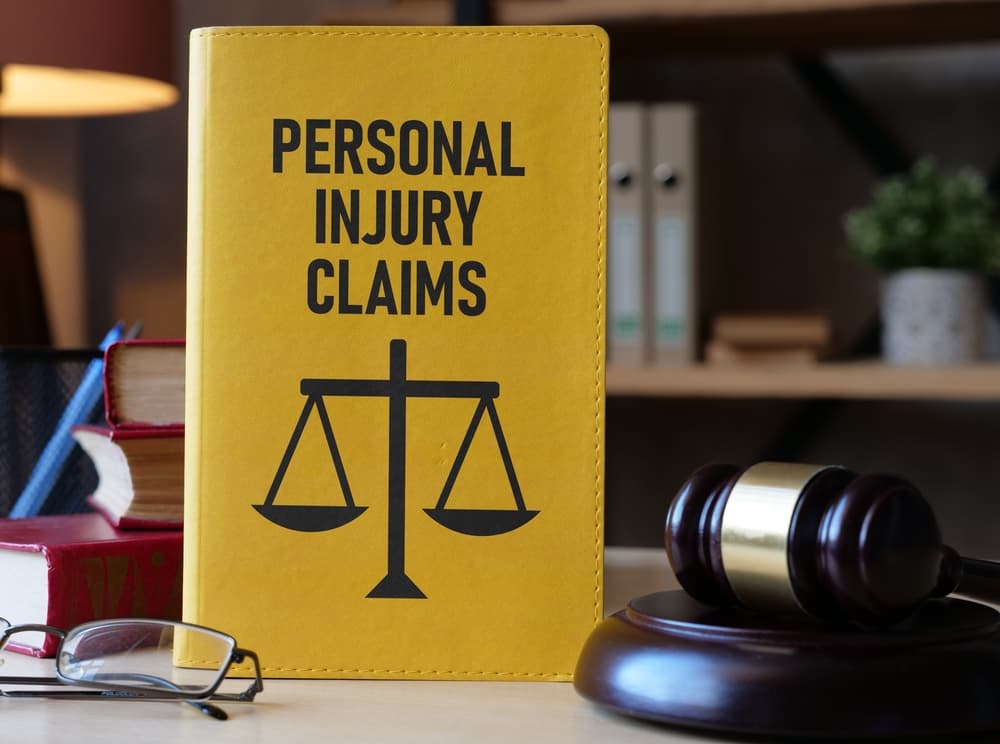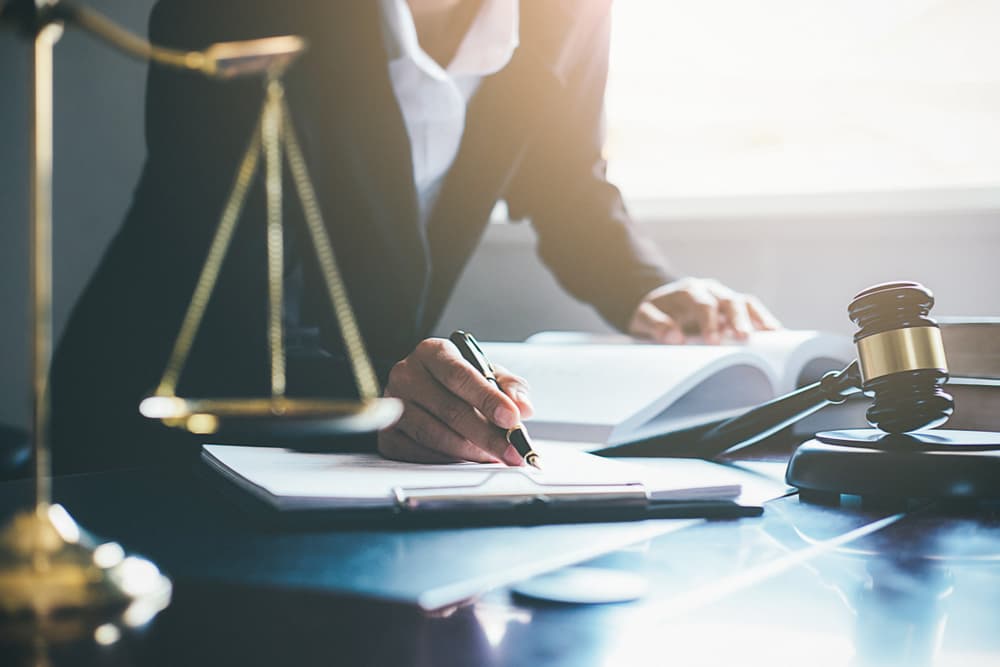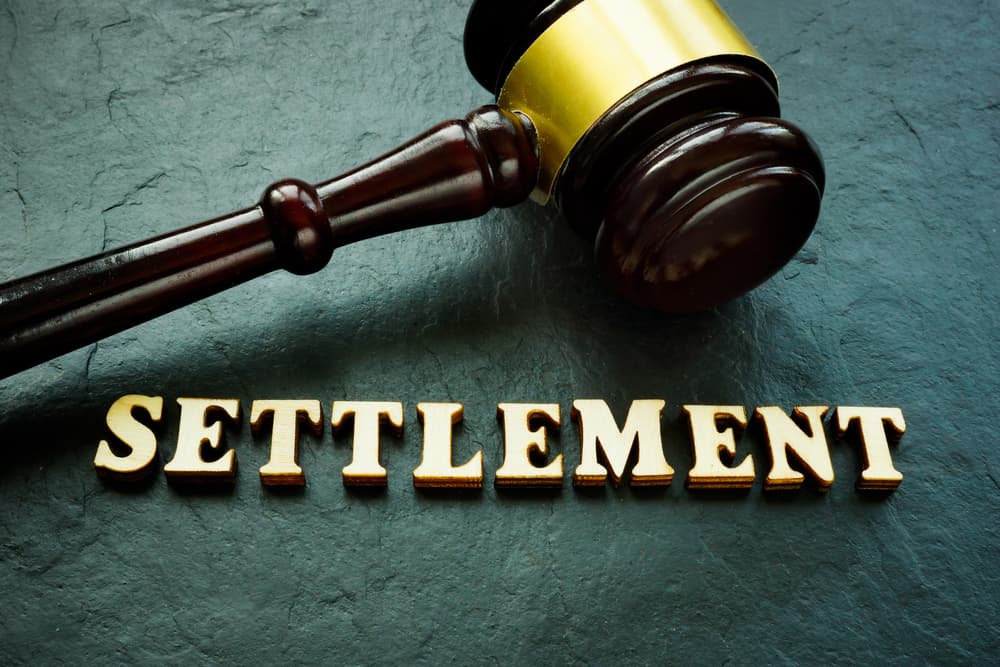When individuals and entities commit negligent acts, others can suffer debilitating injuries that leave them incapacitated. In these circumstances, accident victims can file a personal injury claim or lawsuit, seeking various damages.
During a personal injury claim, you need to have qualified legal representation in your corner. Your attorney can manage all the legal steps for you and tell you what to expect, including ongoing settlement negotiations and possibly litigation. Your attorney can also estimate the likely settlement or verdict value of your personal injury case, depending on your injuries' circumstances and extent.
Negligence by Others That Leads to a Personal Injury Claim or Lawsuit

Negligence by others can give rise to personal injury claims or lawsuits stemming from various situations where individuals fail to exercise the reasonable care expected in a given circumstance. These include the following:
- Car Accidents — One prevalent type of occurrence is car accidents, where reckless driving, distracted driving, or failure to adhere to traffic laws can result in severe injuries. Victims can pursue legal action against the negligent party to seek compensation for medical expenses, lost income, and pain and suffering.
- Truck Accidents — Crashes involving large commercial vehicles often happen for the same reasons as car accidents, but they can often cause more significant damage and injuries. The resulting claims can also be more complicated, as there might be multiple liable parties, highly technical evidence, and federal trucking regulations to contend with during the process.
- Premises Liability — Premises liability is another common avenue for personal injury claims arising from unsafe conditions on someone's property. Slip-and-fall accidents, inadequate security leading to assaults, or poorly maintained premises contributing to injuries fall under this category. Property owners must maintain a safe environment; failure to do so can result in legal consequences.
- Workplace Accidents — Workplace accidents often lead to personal injury claims when third parties are negligent and hurt people on the job. Negligence can manifest in vehicle accidents, contractor errors, and more. Injured employees may seek compensation for medical bills, lost income, and rehabilitation costs through personal injury lawsuits against third parties.
- Dog Bites — Dog bites represent another category of negligence — owners are responsible for controlling their pets. Failure to leash or restrain a dog properly can lead to serious injuries that the owner may be liable for. Victims may pursue compensation for medical expenses and emotional distress resulting from the incident.
- Nursing Home Negligence — Nursing home negligence can lead to personal injury claims when elderly residents endure substandard care. Issues such as neglect, inadequate supervision, or physical and emotional abuse can give rise to legal actions that concern family members or the affected individuals themselves.
In all these scenarios, proving negligence involves establishing that the responsible party breached their duty of care, directly causing the injuries. Consulting with a qualified attorney is crucial for those seeking recourse in personal injury claims resulting from the negligence of others.
How to Prove a Personal Injury Claim
Nursing home negligence can lead to personal injury claims when elderly residents endure substandard care. A successful personal injury claim hinges on establishing specific legal elements, and accumulating compelling evidence is paramount to support each element effectively.
The first element is the duty of care, which requires demonstrating that the at-fault party (or defendant) owed a duty to act responsibly in a given situation. For instance, drivers must operate vehicles safely. Evidence supporting this can include traffic laws, eyewitness testimonies, or professional opinions on standard conduct in similar situations.
The second element is a breach of duty, indicating that the defendant failed to meet the expected standard of care. Evidence of this often involves presenting facts illustrating negligent actions or omissions. For example, a truck accident case may involve hours of service records, black box data, and other evidence demonstrating the truck driver violated a federal regulation.
Causation is the third element, requiring a clear link between the defendant's breach of duty and the accident victim's (plaintiff's) injuries. Medical records, professional opinions, and a chronological account of events help establish this connection. Demonstrating that the at-fault party's actions were a direct cause of the harm the plaintiff suffered is essential in establishing causation.
Damages constitute the final element, necessitating proof of the plaintiff's harm or losses. This includes medical bills, lost income records, property damage, and tangible losses. Additionally, non-economic damages like pain and suffering may require evidence such as testimony from the injured party, medical professionals, or mental health professionals.
Eyewitness testimonies are crucial in corroborating events and providing a firsthand account of the incident. Photographs or videos of the scene can serve as powerful visual evidence, clearly depicting the conditions or damages involved. In cases where professional opinions are crucial, such as accident reconstructions, these professionals can provide insights supporting the plaintiff's claims.
Consistency in evidence and a meticulous presentation of facts are vital throughout the legal process. Note gathering and presenting evidence is essential as it supports each legal element and effectively counters any potential defenses the opposing party raised. A comprehensive and well-documented case significantly enhances the chances of a successful personal injury claim.
What Happens During Personal Injury Settlement Negotiations?
A skilled lawyer is pivotal in navigating settlement negotiations with insurance company representatives in a personal injury case. First, the lawyer is an effective communicator, articulating the client's position clearly and persuasively. They present the facts of the case compellingly, emphasizing the legal merits and the extent of the client's injuries and damages.
In-depth legal knowledge is a cornerstone of the lawyer's ability to negotiate effectively. They leverage their understanding of personal injury laws, precedents, and the intricacies of insurance policies to build a solid foundation for negotiations. This experience allows them to counter any attempts by insurance representatives to undervalue the claim or minimize the extent of liability.
Timing is also critical in settlement negotiations, and a skillful lawyer knows when to initiate or respond to the insurance company's settlement offers. They also consider the client's medical prognosis, future treatment needs, and the overall repercussions of the injuries. An experienced personal injury lawyer maximizes the potential settlement amount by strategically timing settlement negotiations, including all present and future damages.
One of the lawyer's key roles is to gather and present compelling evidence. They compile medical records, bills, and professional opinions to substantiate the client's injuries and losses. Presenting a well-documented case strengthens the negotiating position, making it more challenging for the insurance company to dispute the validity or severity of the victim's claims.
Negotiating with insurance representatives also involves completely understanding the insurance industry's tactics. Good personal injury lawyers have experience fighting common insurance company strategies, such as downplaying liability, challenging causation, or attempting to settle quickly for a minimal amount. Their experience enables them to anticipate and address these tactics, preserving the client's interests throughout the negotiation process. A lawyer provides a barrier between the client and the insurance company, shielding the client from harmful tactics. Lawyers oversee all communications, protecting their client's rights and best interests while pursuing a fair and just settlement.
A lawyer's primary role in settlement negotiations is to secure the most favorable outcome for their client, considering both the immediate needs and the long-term consequences of the personal injury case.
What Happens During Personal Injury Litigation?

Personal injury litigation is a process that involves several key stages, often ending with either a jury trial or alternative dispute resolution (ADR) proceedings, like binding arbitration or mediation.
Litigation typically begins with filing a complaint, where the plaintiff outlines the case details, including the alleged negligence, the injuries sustained, and the damages sought. The defendant then responds with an answer, presenting their side of the story.
Discovery follows, a phase where both parties exchange information relevant to the case. This includes gathering evidence, deposing witnesses, and requesting documents. Attorneys use this stage to build a complete understanding of each side's facts, strengths, and weaknesses.
Subsequently, pre-trial motions may occur, allowing either party to seek rulings on specific legal issues or request the court dismiss certain claims. These motions help define the scope of the case before moving forward.
If the parties do not reach a resolution through pre-trial motions, the case proceeds to trial preparation, where attorneys refine their strategies, identify key witnesses, and prepare exhibits. Negotiations may continue, possibly leading to a settlement before reaching the trial stage.
Jury trials involve presenting evidence and arguments by both parties to a jury of impartial individuals. The plaintiff's attorney presents their case, followed by the defendant's response. The attorneys for both parties submit evidence and examine and cross-examine witnesses. The jury then deliberates and delivers a verdict, determining liability and potential damages.
As an alternative to litigation in the court system, parties may opt for alternative dispute resolution methods, such as binding arbitration or mediation. A neutral third party reviews the evidence during arbitration and makes a binding decision. Conversely, mediation involves a mediator facilitating negotiations between the parties to reach a mutually acceptable agreement. Mediation is non-binding, and if the parties do not agree, the case may proceed to trial. Binding arbitration, however, results in a final and legally enforceable decision.
The choice between a jury trial and ADR often depends on factors like time, cost, and the desire for a more collaborative resolution. Each stage of personal injury litigation demands careful navigation by skilled attorneys who effectively represent their client's interests to achieve the most favorable outcome.
What Monetary Damages Can I Recover?
Accident victims pursuing a personal injury claim or lawsuit due to someone else's negligence may be eligible to recover monetary damages tailored to their injuries. Compensatory damages, the primary category, seek to reimburse victims for their losses.
- Medical expenses also constitute a significant component, covering the costs of hospital stays, surgeries, medications, rehabilitation, and any other necessary treatments. Detailed documentation of medical bills and professional testimony is essential to establish the extent of these damages.
- Lost income represents a crucial element, compensating victims for income they cannot earn due to the injuries. This includes current and future lost earnings, and evidence may include pay stubs, tax returns, or employer testimony.
- In cases where injuries result in long-term or permanent impairments (such as paralysis), victims may seek loss of earning capacity damages. This accounts for the diminished ability to earn income in the future, and economic professionals may provide assessments based on the individual's education, skills, and work history.
- Pain and suffering damages encompass the physical and emotional distress the injuries caused. This is inherently subjective, making it challenging to quantify. Attorneys often use various methods, such as testimony from the victim, medical professionals, or mental health professionals, to convey the effects of pain and suffering on the individual's life.
- Loss of consortium damages may be available in cases where the injuries negatively affect the victim's relationship with their spouse. This can include the loss of companionship, support, or intimacy, and evidence may involve testimonies from both spouses.
- Property damage is relevant in cases involving vehicular accidents. Victims can seek compensation for repairing or replacing damaged property, such as vehicles or personal belongings.
- In cases where the defendant's actions are particularly egregious, the victim may pursue punitive damages. Unlike compensatory damages, punitive damages intend to punish the wrongdoer and deter similar conduct in the future. However, these damages are typically available only in specific circumstances where the defendant's actions were reckless or malicious.
Navigating the complexities of these various damages requires the experience of a skilled personal injury attorney. Through comprehensive documentation, persuasive arguments, and compelling evidence, attorneys advocate for their clients to ensure they receive fair and just compensation for the specific injuries they suffered.
Call an Experienced Personal Injury Lawyer Today
If you suffered injuries resulting from someone else's negligence, a knowledgeable personal injury attorney can be an invaluable help. Your attorney can answer all your questions and guide you through the process, helping you make intelligent and informed decisions. Your lawyer can also represent you during all settlement negotiations and litigation proceedings to pursue the financial compensation you deserve.



